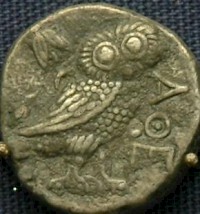Fayaz Tepe
Q25523471Fayaz Tepe: ancient Buddhist monastery near modern Termez (southern Uzbekistan).
Early Bactria

Since the early Achaemenid age, Bactria (the plain of the Upper Oxus) was used to settle Greek deportees. They must have kept their Greek identity, because they were recognized when Alexander the Great arrived in 329 BCE. To pacify the region, he resettled the native population of pastoralists and farmers in newly founded cities (e.g., Ai Khanum in modern Afghanistan and Kampyr Tepe in Uzbekistan) and made them serfs of the thousands of Greek mercenaries whom he ordered to remain in Bactria as an occupying force.
After Alexander's death (323 BCE), Bactria became part of the Seleucid Empire, but after the mid-third century, an independent Graeco-Bactrian kingdom was created. Under its king Demetrius (r.c.184-c-170), it expanded towards Gandara (the valley of the river Kabul) and the eastern Punjab, while in Bactria itself, new cities were built, like Termez (which may originally have been called Demetria)
Kushan Bactria

However, the Graeco-Bactrians lost Bactria in the third quarter of the second century BCE. The area was taken over by the nomads with whom the Graeco-Bactrians had always lived together (Sacae and Yuezhi).
After the initial shock, a new political unit was created, which is named after the Yuezhi nomads: the Kushans. This new state had a quite syncretistic nature and incorporated Graeco-Bactrian, Iranian, and nomadic elements. Having created some stability in Bactria, the Kushan Empire expanded to Gandara and the Punjab as well. Peshawar became the new capital.
 Fayaz Tepe, Stupa, inside |
 Fayaz Tepe, Monastery, Court |
 Fayaz Tepe, Monastery and Stupa, model |
 Fayaz Tepe, Stupa |
Fayaz Tepe

Buddhism benefited from the fact that the Punjab and Bactria were united under one king: this religion spread from the south to the north, and from the valley of the Oxus along the Silk Road to China and, eventually, Japan.
There were many Buddhist monastic settlements in Kushan Bactria: Kara Tepe and Fayaz Tepe, which are within sight of each other, are just two of the monasteries surrounding Termez. Fayaz Tepe is the older and more monumental of the two: it is essentially a very big stupa from the first century CE with a monastery next to it, while Kara Tepe consists of three groups of monks' cells and several small stupas. Another stupa was Zurmala, east of ancient Termez.

Fayaz Tepe probably came to an end in the third century CE, when the Sasanian Persians tried to restore the frontiers of the ancient Achaemenid Empire and invaded Bactria. During these wars, Fayaz Tepe was abandoned. The monks must have moved to nearby Kara Tepe or another monastic settlement.
Excavating the ruins of Fayaz Tepe, archaeologists have found wall paintings and sculptures from the three first centuries of our era. Some finds date to the fourth century and prove that the stupa still received visitors. It must have been a special place indeed, with a small dome (three meters high) inside that was covered by a larger dome (fifteen meters high).
Greek influences can easily be recognized in Fayaz Tepe, for example in the relief of a Buddha, seated underneath a Bodhi Tree, with two monks standing next to him, between two Corinthian columns supporting an arch. There is no need to explain why the wall painting of a horned Alexander the Great is another testimony of Greek influence in the valley of the Oxus.







